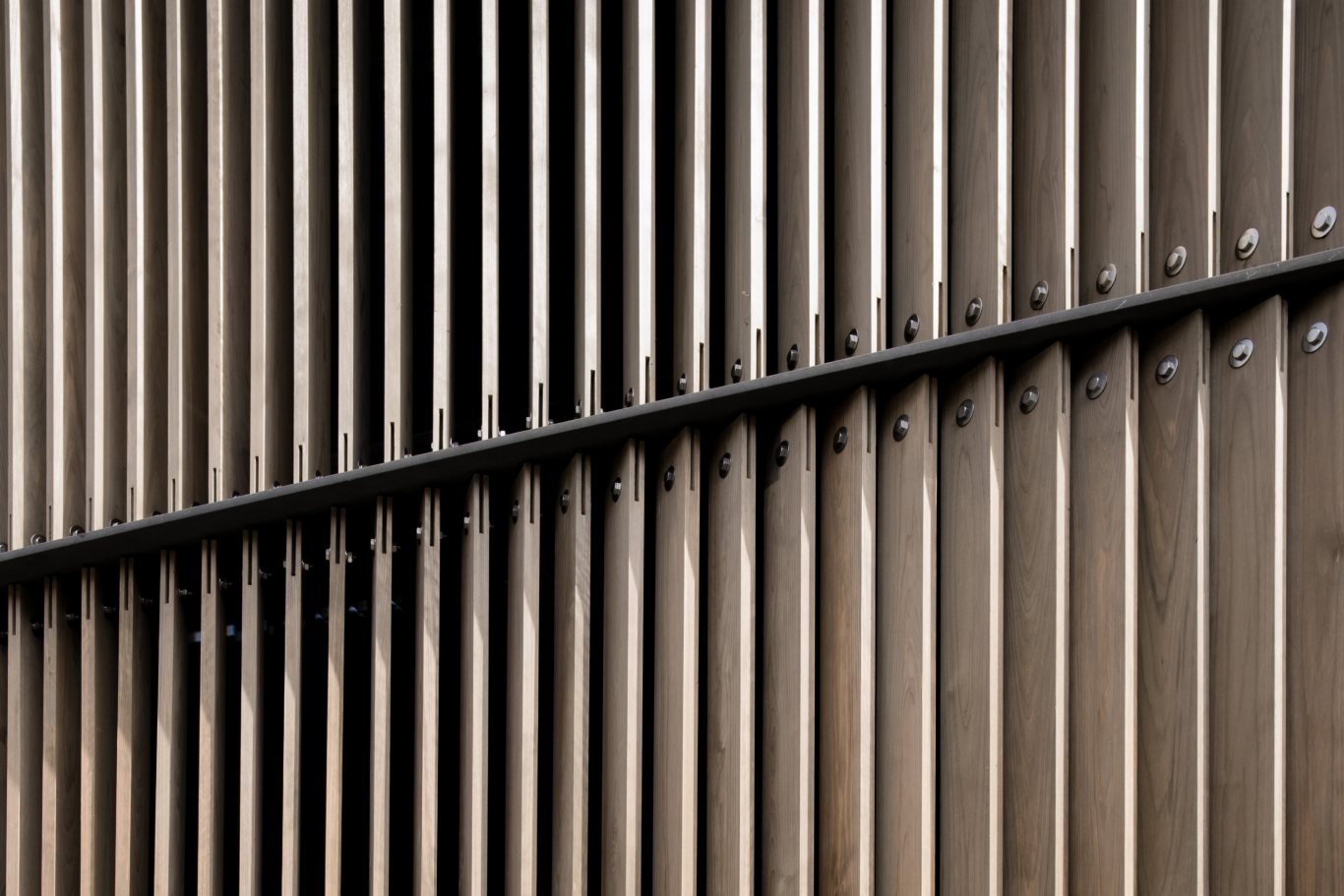K8
Kyoto, Kinki Region, Japan, 2014—2015
Until some time ago, there were, we are told, 12 bars spread over three 2-storey houses on this 50 m2 plot on Kiyamachidori, adjacent to one of Kyoto’s most intricate network of night alleys, Pontocho, where a vibrant mixture of bars, brothels, inns, dwellings, shops have for centuries created an urban atmosphere of essential Kyoto nightlife. With an unobtrusive high-end restaurant next to a (visually less subtle) cheap yakitori, with a hidden gem of a ryokan at the end of the narrowest of side-alleys across an enigmatic place commanding courage to enter, any walk here leads to eventual surprises.To the west, however, Kiyamchidori runs parallel to Pontocho’s main spine. Here, regulations have loosened over time resulting in an eclectic array of buildings up to six storeys tall. K8 is on a narrow site perched between two such tall buildings representing the days when the area was declared open frontier and quick money was put in erecting (at best) nondescript mediocrity.
Where Pontocho is experienced as a horizontal sequence of encounters, K8 is the translation of that experience into the vertical. In foregoing the ubiquitous elevator, which —as a separate tube penetrating unrelated layers— divides as much as it connects, K8 is in fact one coherent, continuously varying space stretching over eight levels. The evening evolves as a gradually changing course of events, from aperitif on ground level to digestif on the top overlooking Pontocho towards Kamogawa. Here, the staircase cannot be a separate serving space but becomes the central stage. In epitomising K8’s central concept, the staircase is about detailing to a degree of absence, so that the limited space can be experienced to the full, in a spatially continuous transparency.
As a homogeneous yet continuously changing surface, the façade creates an ambiguity often found in Kyoto’s architecture. Through their gradual rotations, several hundred wooden louvers evoke a sense of motion, as if the building itself were continuously engaging with its environment. From the outside, the building’s interior is more concealed than revealed. Facing the building, one is left without a precise answer as to how many floors or how deep the building might be. Towards the sides, the louvers are rotated to a degree that they almost appear to be a solid, albeit nuanced, wall. Towards the middle, varying degrees of transparency give subtle hints about the inside. Walking by further sets the façade in motion, as if the building itself were moving around those who pass by, luring them inside by revealing subtle glimpses of the inside.
Kyoto, Kinki Region, Japan, 2014—2015
Type
Status
Team
Florian Busch, Sachiko Miyazaki, Suguru Takahashi, Akira Miyamoto, Antoine Vaxelaire, Renee Reder, Oliver Pershav, Katie Colford (Intern), Shiori Sageshima (Intern), Anne-Marlene Rüede (Intern), Kayo Nakamura (Intern)
Structural Engineering: OAK (Masato Araya, Tomonori Kawata)
Contractor: Mugishima Corporation
Size
GFA: 156 m²
Structure
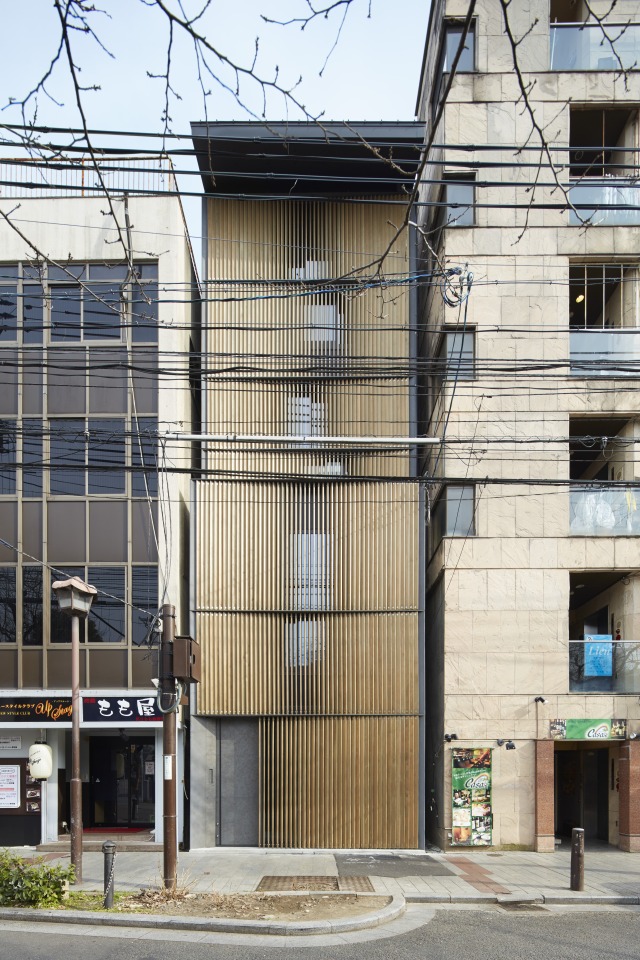
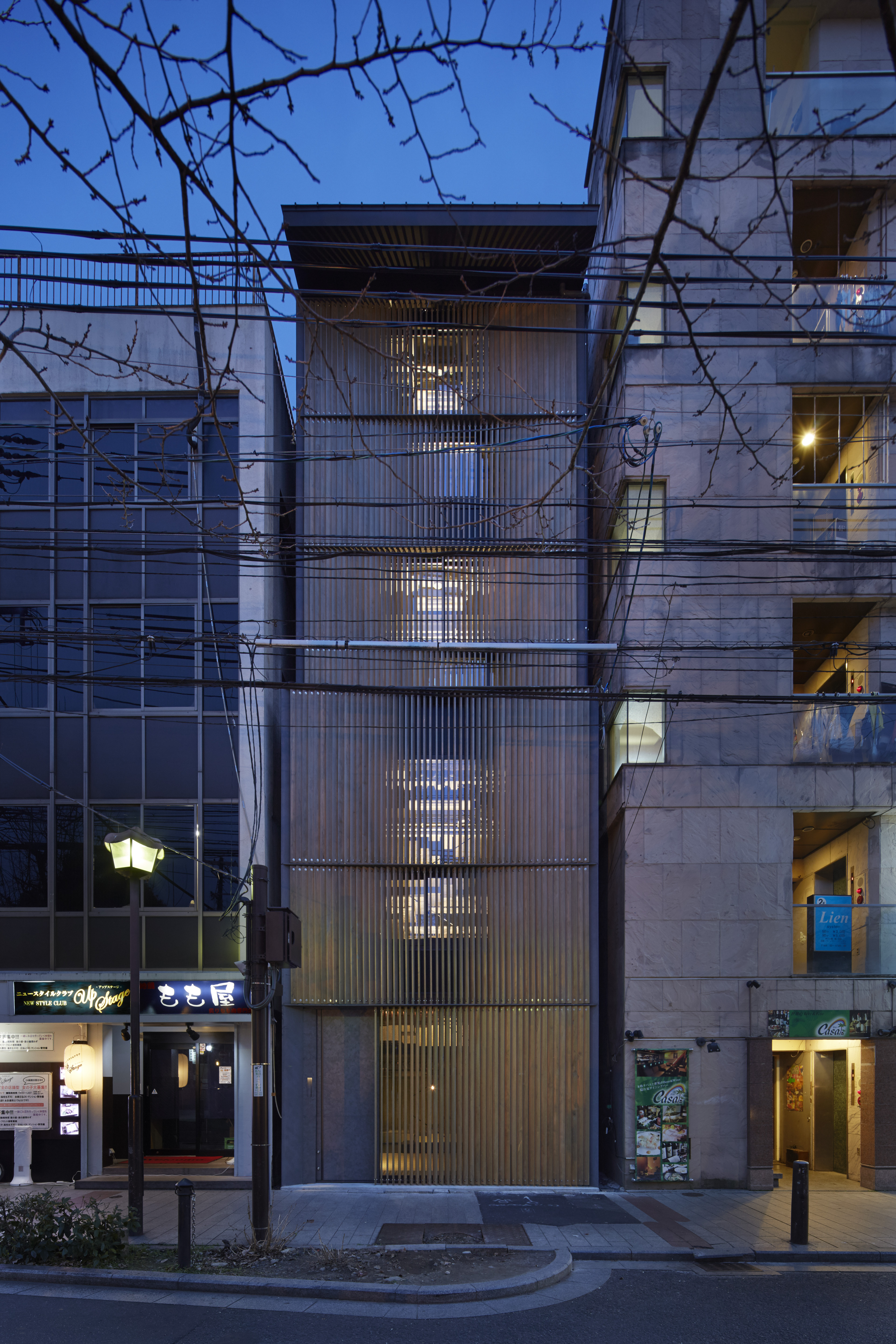
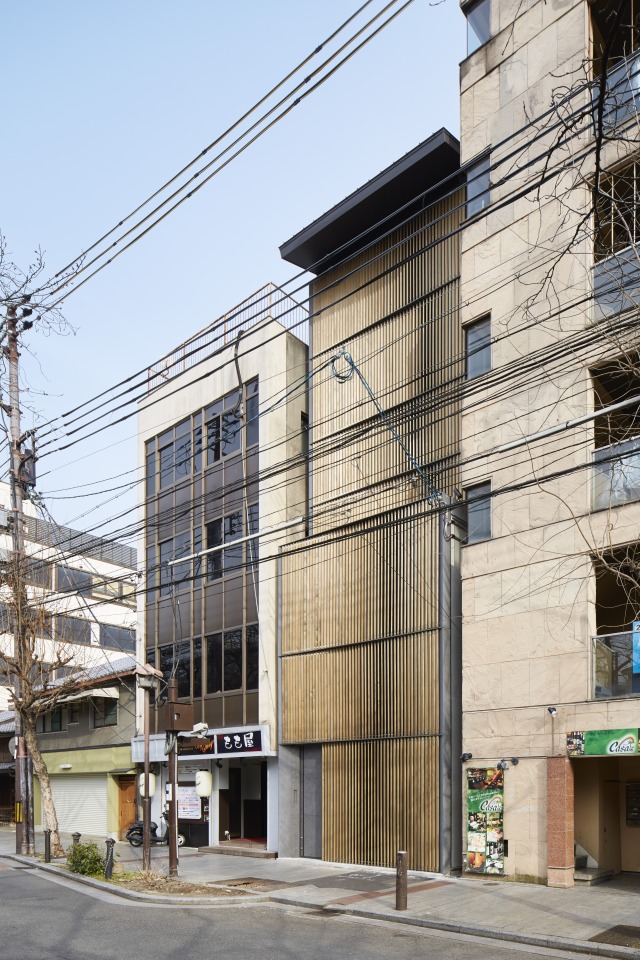
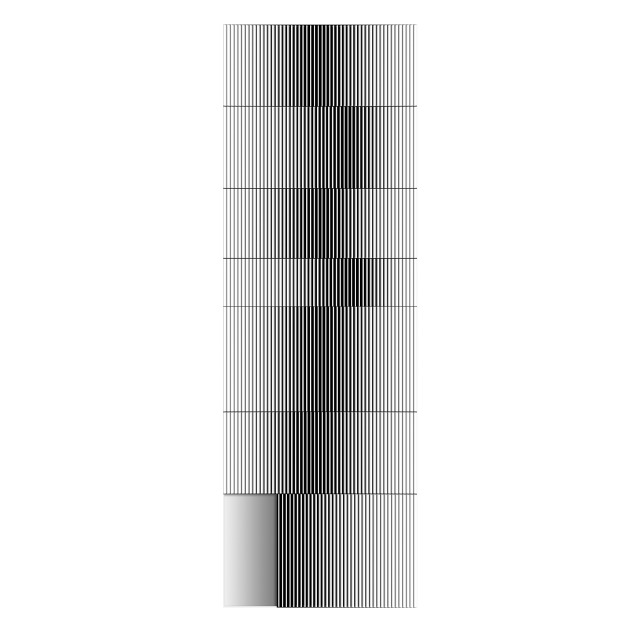
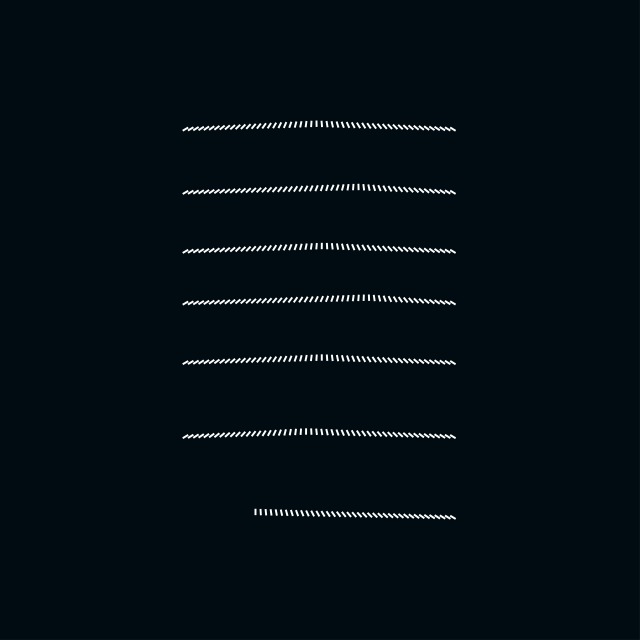
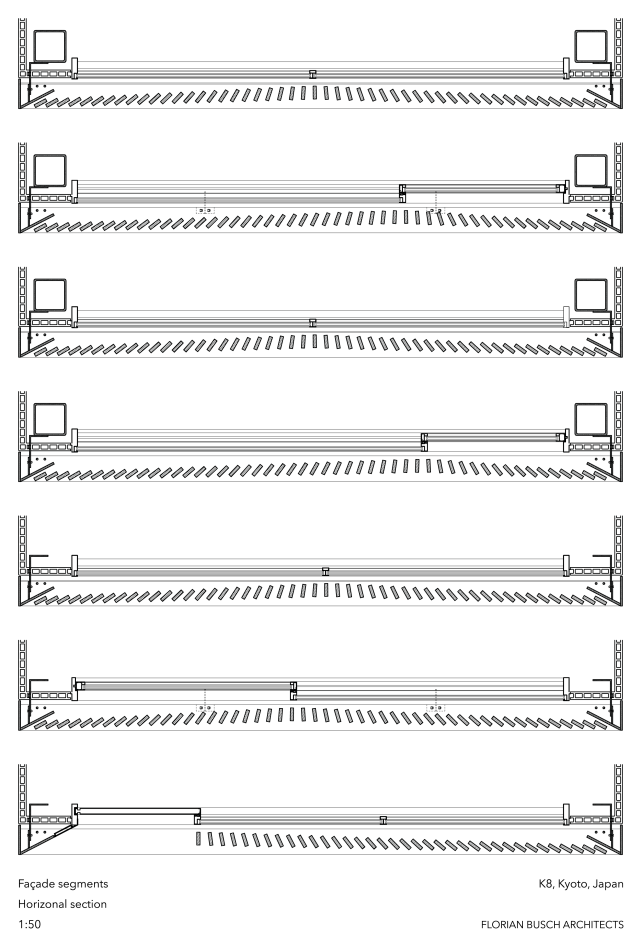
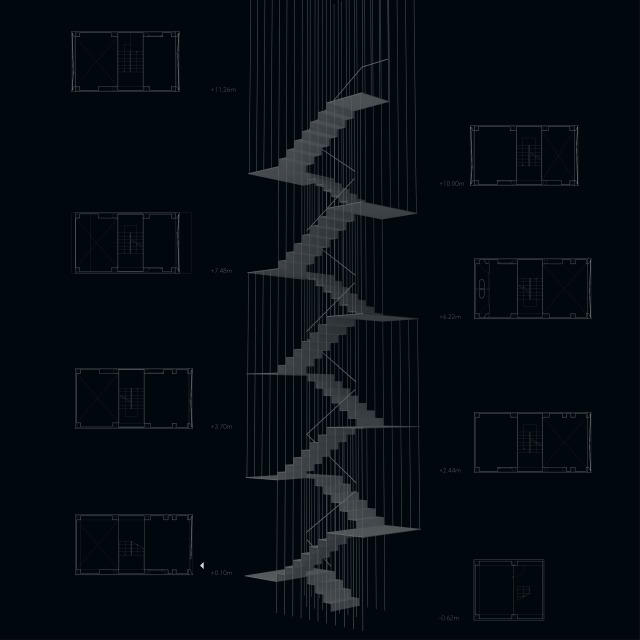
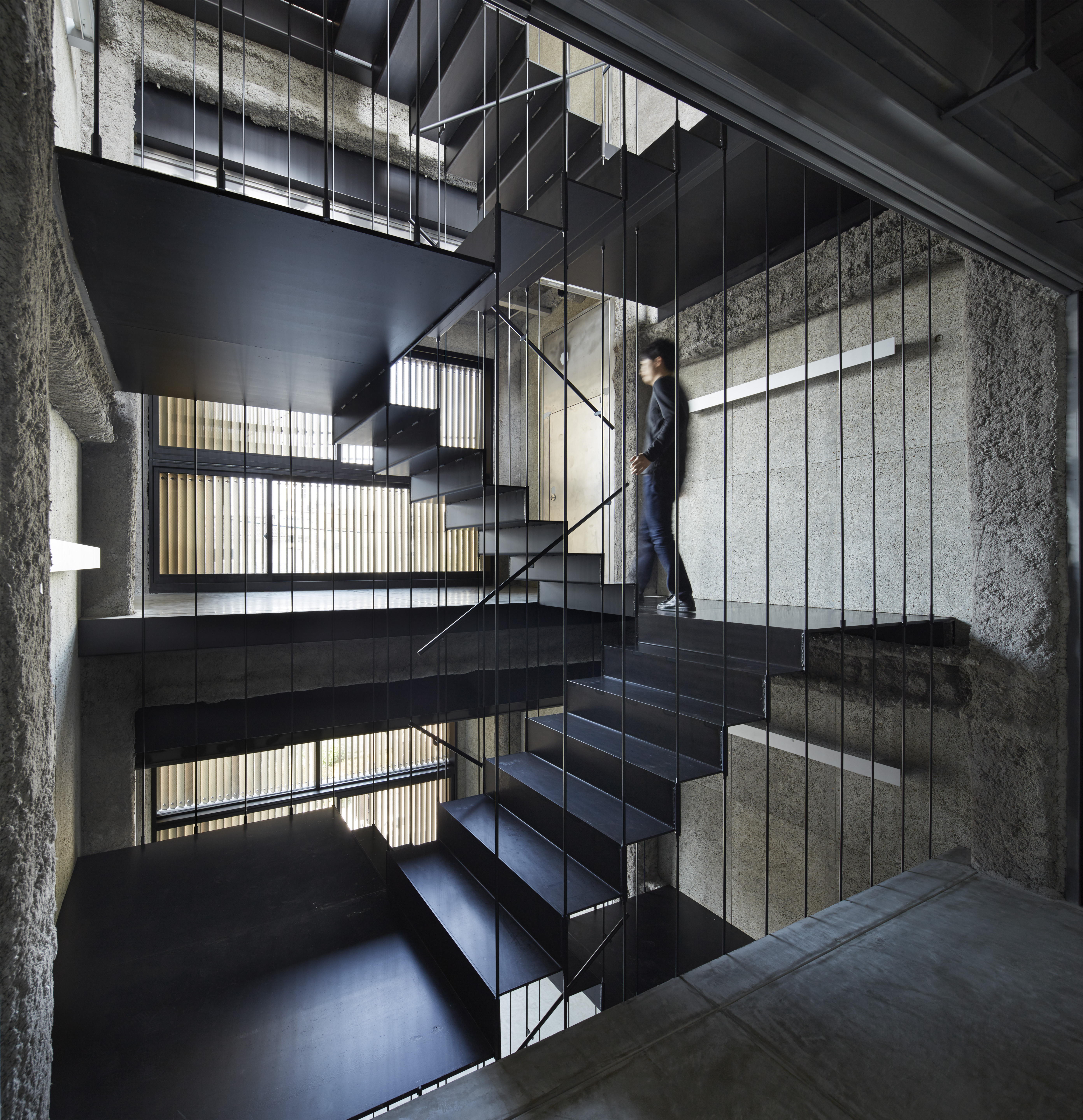
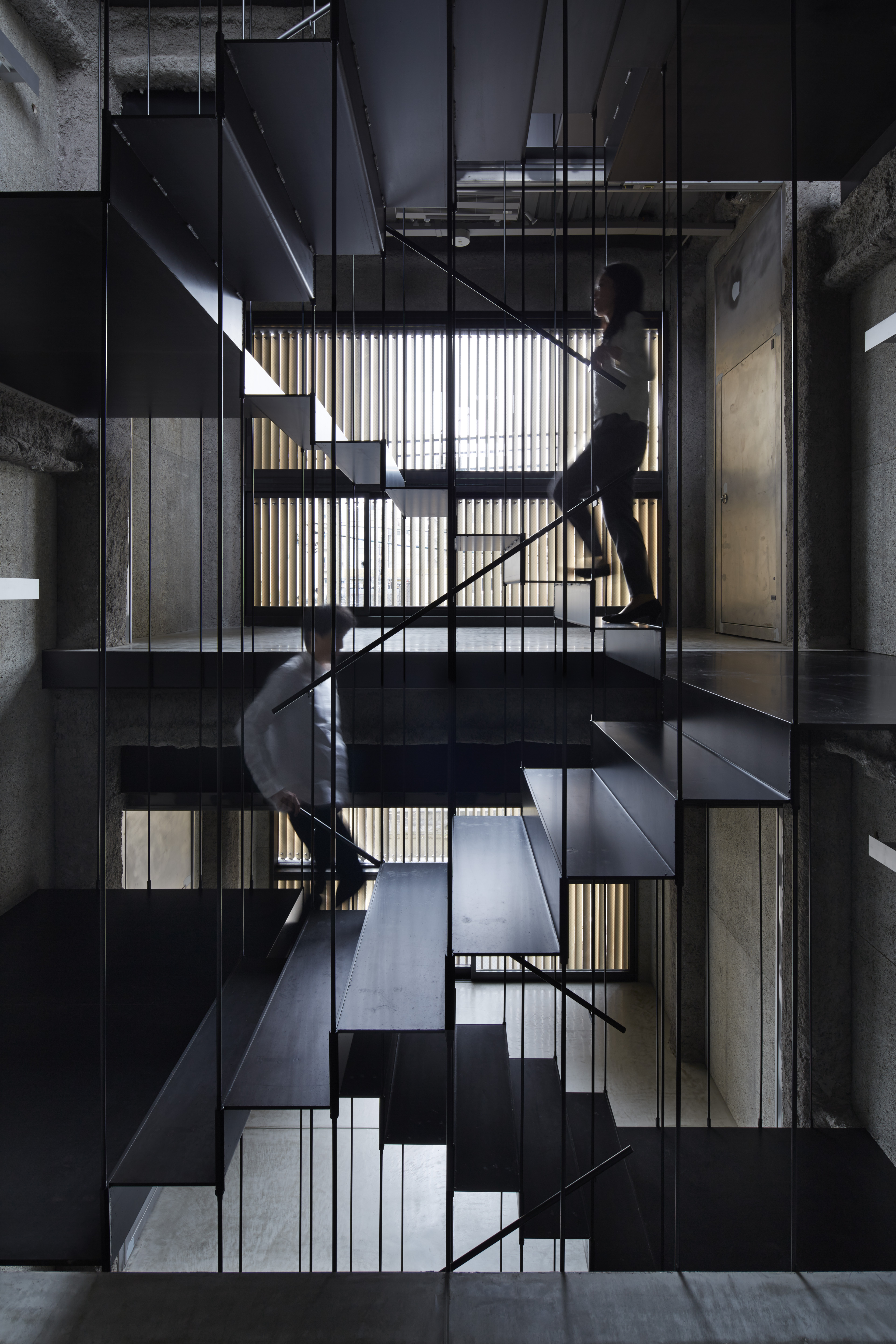
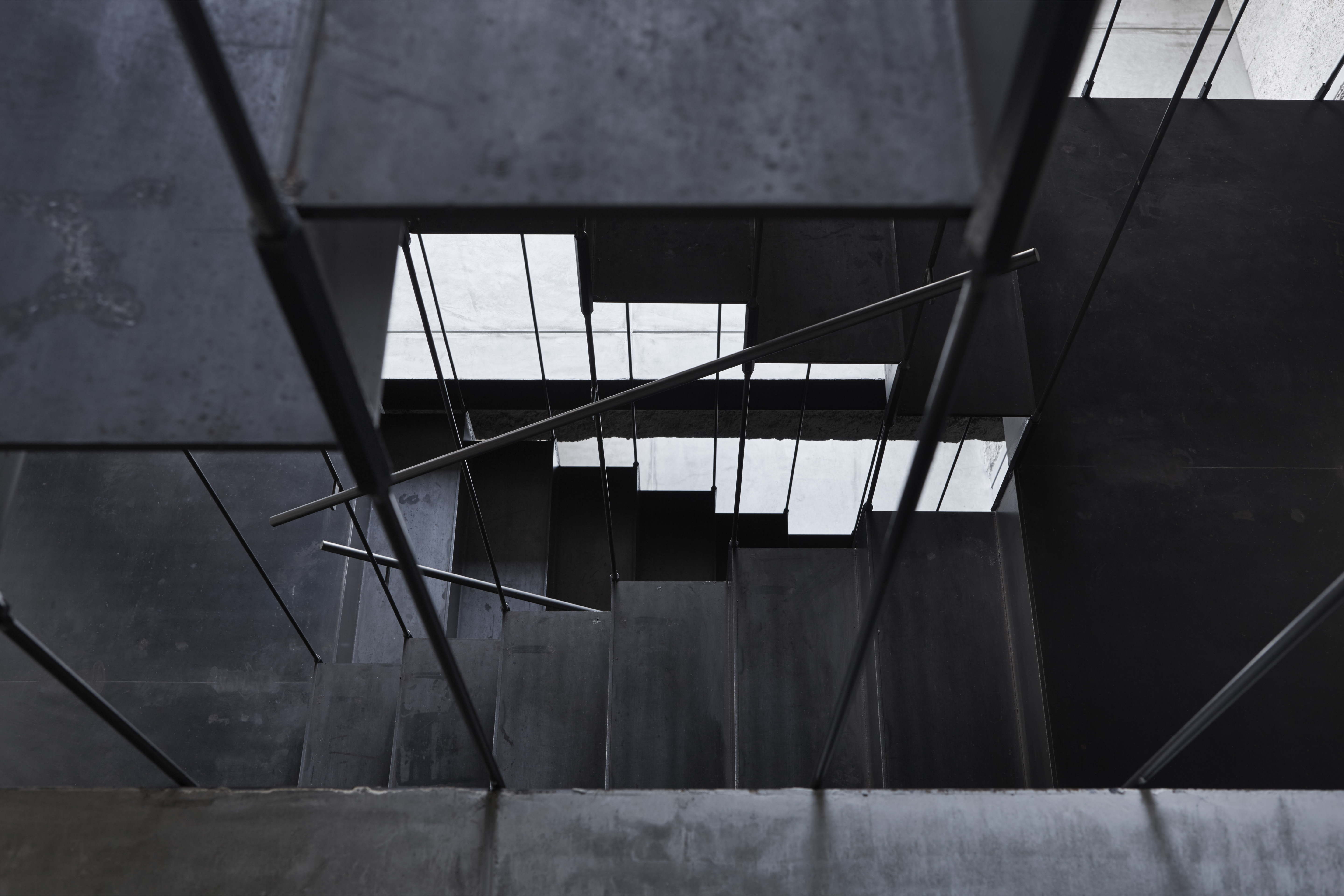
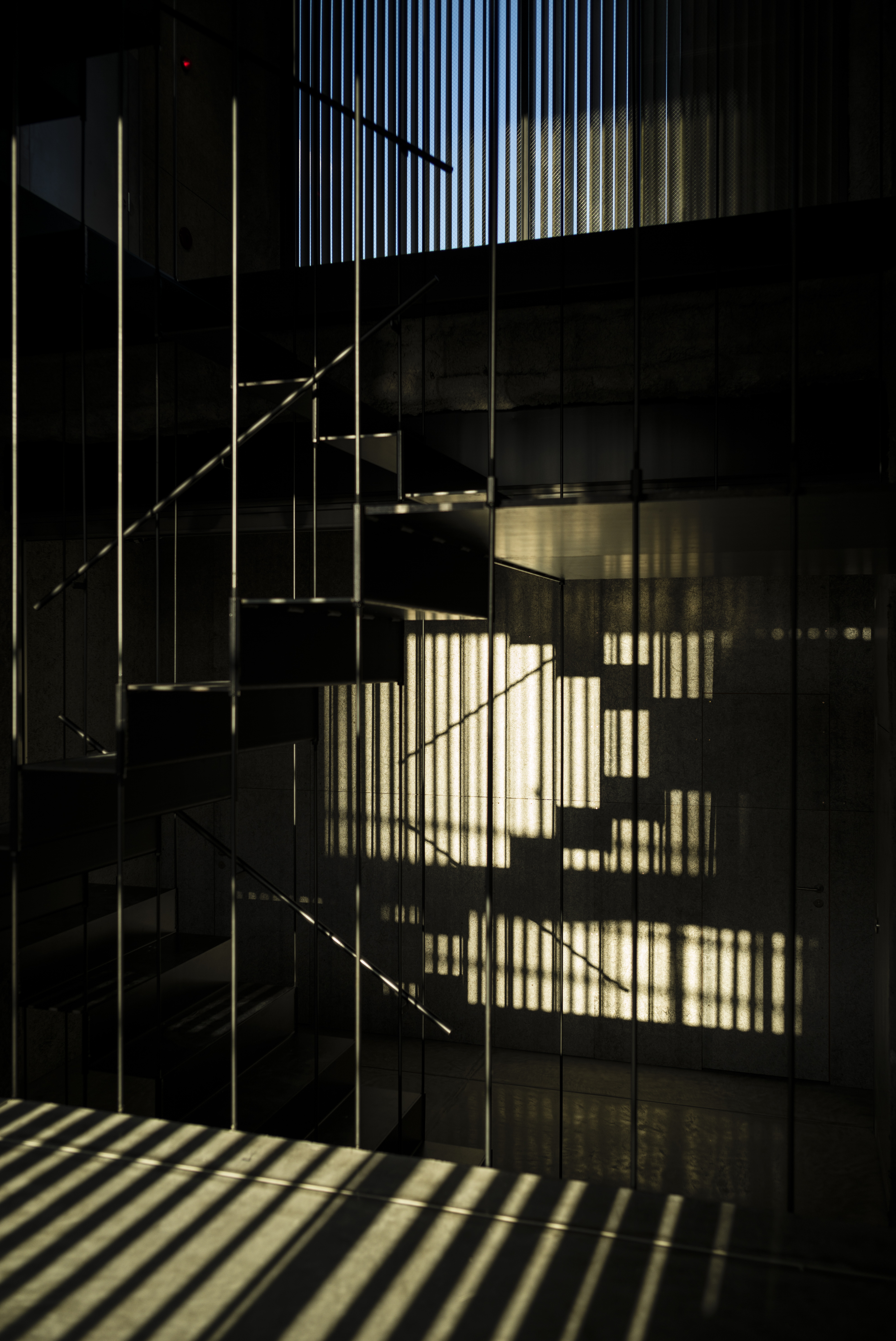
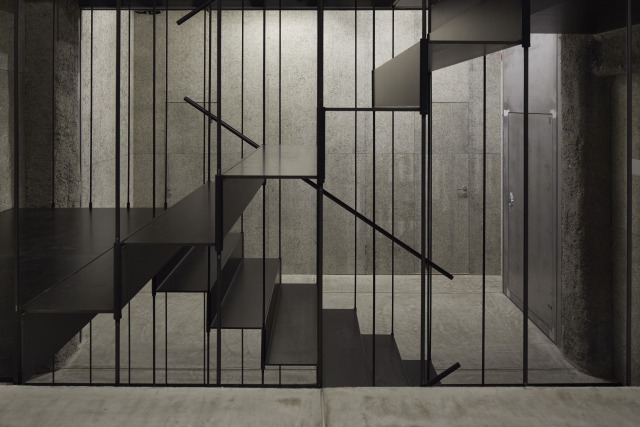
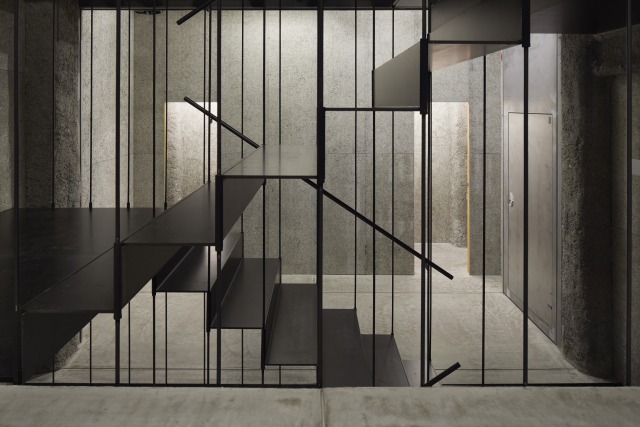
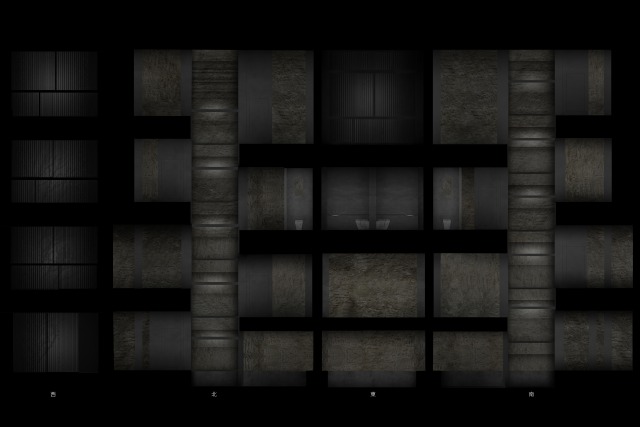

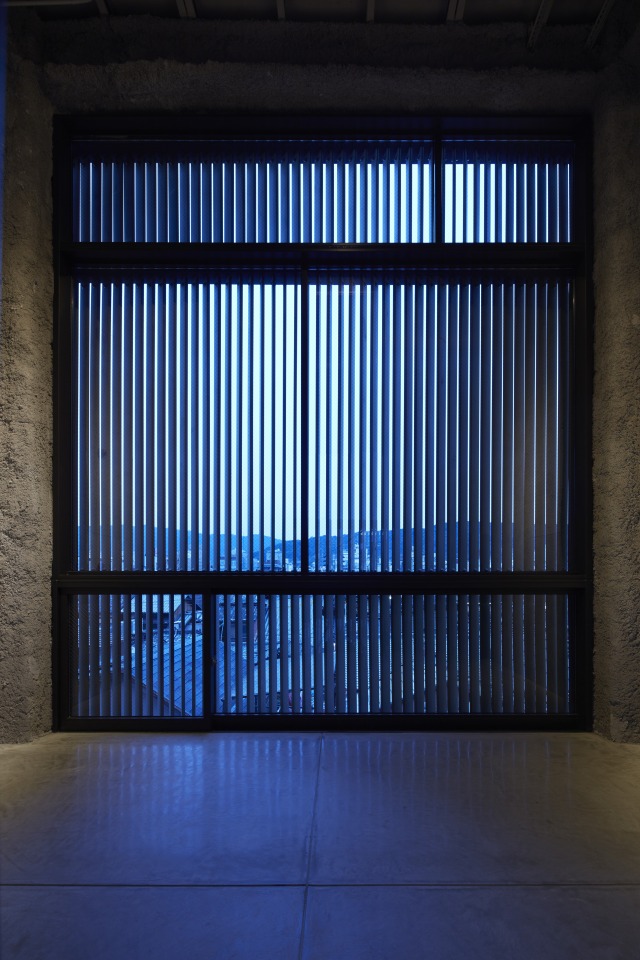
Award
Lecture
Exhibition
publications
- Archipendium 2020, 2020
- K8 in steeldoc, 2019
- Architectural Element 2: Stairs, 2018
- Archipendium 2018, 2018
- Detail Praxis: Treppen, 2017
- Advanced Architecture 5, 2017
- K8 in DETAIL, 2016
- K8 on archdaily.com, 2016
- K8 in db, 2016
- FBA | selected works | vol. 2, 2016
- Mini Building, 2016
- JDN-K8, 2016
- K8 | dezeen, 2016
- K8 | BauNetz, 2016
- K8 | designboom.com, 2016
Related Projects:
- K8, 2014—2015
- BL Project, 2012
- Tokyo Designers Week 2011, 2011
- Nobori Building, 2021—2023
- Y Project in Kagurazaka, 2017—2018
- K8, 2014—2015
- Zucca Restaurant, 2012
- RG Project, 2009
- I'T, 2019
- Science Island Kaunas, 2016
- Museo de Arte de Lima, 2016
- K8, 2014—2015
- Viaduct Gallery, 2014
- House of Hungarian Music, 2014
- Guggenheim Helsinki, 2014
- Ota Culture Centre, 2014
- Taichung City Cultural Center, 2013
- Haus der Zukunft Berlin, 2012
- Tokyo Designers Week Art Galleries, 2011
- Tokyo Designers Week 2011, 2011
- RG Project, 2009
- Berlin-Tokyo|Tokyo-Berlin, 2006
